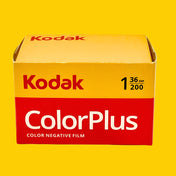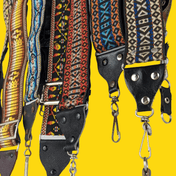Photography, an art form that has been a cornerstone of visual expression for over two centuries, is about capturing light. The camera, much like our eyes, sees and captures light, translating it into images.
This comprehensive guide is your ticket to understanding the basic photography concepts that will significantly elevate the quality of your photographs.
Understanding Your Camera: The Key to Great Photography
To be a budding photographer, you must first understand the tool of your trade - your camera. Unravelling its functions and the principles behind them will arm you with the fundamental knowledge you need to step up your photography game.
Camera Settings and Their Impact
Learning how to navigate the labyrinth of camera settings is essential to producing quality images. Let's dive into the fundamental camera settings.
Shutter Speed: Controlling Motion and Light
The shutter speed is the length of time your camera’s shutter is open, and it determines how much light reaches your camera sensor.
A fast shutter speed freezes action, reducing the risk of blurry images due to camera shake, while a longer shutter speed creates motion blur, perfect for capturing flowing water or light trails.
Aperture: The Eye of Your Camera
The aperture, similar to the iris in a human eye, controls the amount of light entering the camera.
A narrow aperture (a higher f-number) allows less light but gives a greater depth of field, keeping more of the scene in focus.
In contrast, a wider aperture (lower f-number) lets in more light but provides a shallow depth of field, making it perfect for portrait photography where you want the subject in sharp focus and the background blurred.
ISO: Balancing Light and Noise
ISO determines your camera's sensor sensitivity to light. A low ISO number means less sensitivity to light but produces crisp images with little digital noise.
Conversely, a higher ISO makes the sensor more light-sensitive, useful in low light conditions but can introduce more digital noise.
Camera Modes: Auto, Manual, and Priority Modes
The mode dial on your camera contains a selection of shooting modes. Auto mode allows the camera to make all decisions for you.
Manual mode offers complete control over your camera settings.
Aperture priority mode and shutter priority mode are semi-automatic modes where you set either the aperture or shutter speed, and the camera adjusts other settings to achieve correct exposure.
Sensor Size: Why It Matters
Your camera sensor's size has a significant impact on image quality.
Full frame cameras, with larger sensors, generally offer better image quality and perform better in low light conditions compared to cameras with smaller sensors, such as medium format cameras.
The Art of Photography: Going Beyond Basics
Photography is not just about understanding your camera or mastering your camera settings.
It's about how you see the world and how you choose to express that through your images.
Composition: Framing the Perfect Shot
One of the most critical elements of taking good photos is understanding composition.
Rule of Thirds
The rule of thirds is a fundamental concept in photography where you divide your frame into a 3x3 grid and align your subject along those lines or their intersections to create more balanced and engaging images.
Leading Lines
Leading lines are used to draw the viewer's eye towards a certain part of the image. They can be anything from roads and fences to patterns and colours.
Different Photography Genres
Photography encompasses a broad range of genres, each with its unique challenges and skills to master.
Portrait Photography
Portrait photography is all about capturing a person's personality and emotions. It often involves working closely with a subject and adjusting your camera settings to make the subject stand out.
Landscape Photography
Landscape photography is about capturing the beauty of nature. It often involves waking up at dawn or waiting till dusk to capture the golden hours of the day.
Food Photography
Food photography is about making your viewer's mouth water. It requires a keen eye for detail, composition, and of course, a tasty-looking subject.
Street Photography
Street photography involves capturing candid moments in public spaces. It's about observing people, anticipating moments, and often, being invisible.
Night Photography
Night photography presents unique challenges due to low light conditions, but with the right camera settings like slow shutter speed, wide aperture, and higher ISO, it can result in stunning images.

















